Key takeaways:
- Budget DSLRs offer impressive features like interchangeable lenses and manual controls, making them accessible for beginners.
- When choosing a camera, consider ergonomics, personal shooting style, and the balance between portability and performance, especially when comparing DSLRs to mirrorless options.
- Essential accessories, such as a sturdy tripod, quality camera bag, and extra batteries, significantly enhance the photography experience and improve shooting outcomes.
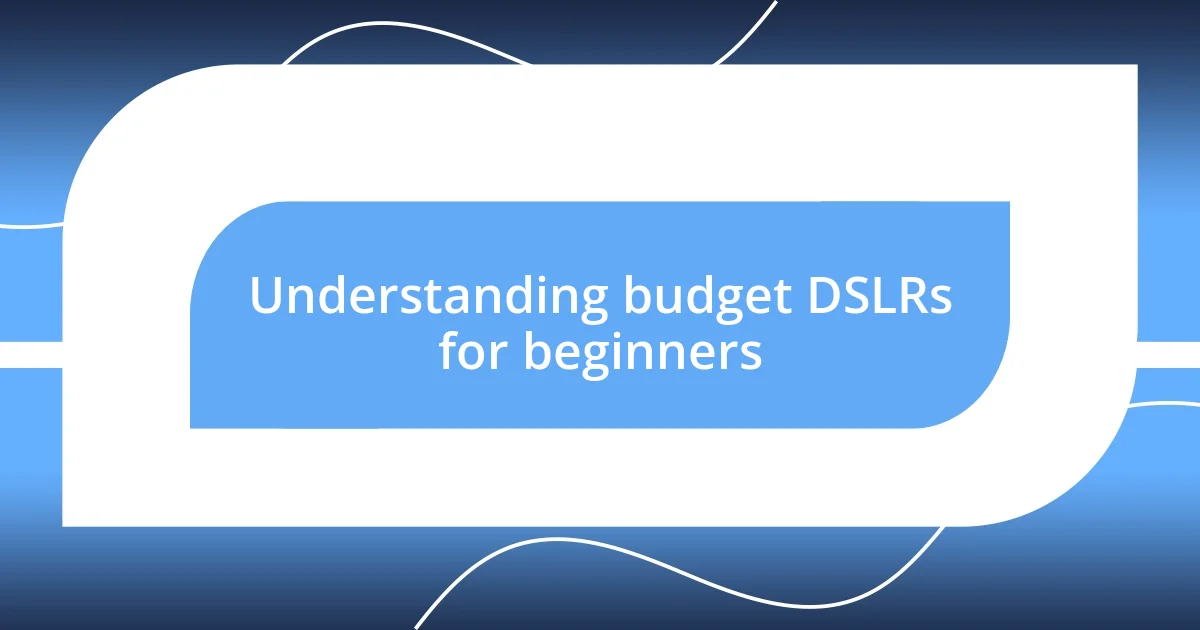
Understanding budget DSLRs for beginners
When diving into the world of budget DSLRs, it’s crucial to understand what you’re really getting for your money. Many beginners might be surprised to find that even entry-level models offer impressive features, such as interchangeable lenses and manual control settings, which were once the hallmark of more expensive cameras. I remember my first budget DSLR; it felt like I had unlocked a new realm of creativity.
One aspect to consider is the importance of ergonomics and build quality. As someone who often shoots for hours, I’ve come to appreciate a camera that feels comfortable in my hands. Have you ever tried holding a camera that just didn’t sit right? It can be frustrating, and that’s why I always advise trying out a few models in-store.
Additionally, while fancy specs can be tempting, I believe that understanding your personal needs is key. Are you planning to shoot mostly landscapes, portraits, or maybe even action shots? In my experience, selecting a camera that complements your primary interest can significantly enhance your photography journey.
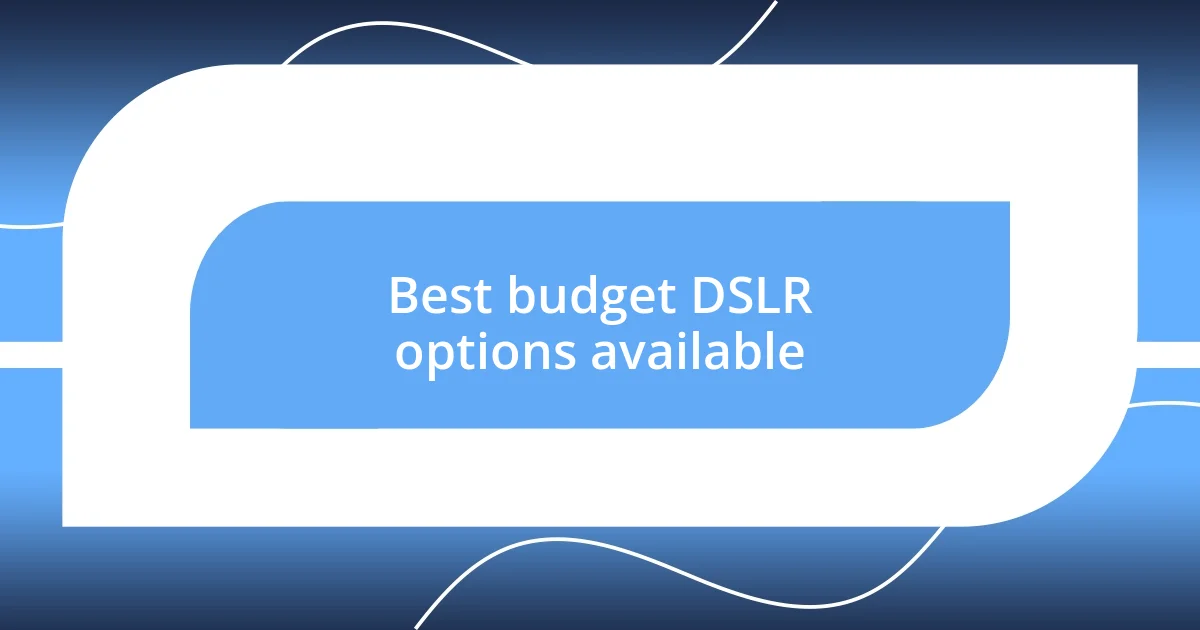
Best budget DSLR options available
Among the best budget DSLR options available, a few models stand out for their balance of performance and affordability. I’ve had hands-on experience with the Canon EOS Rebel T7, and I found it to be incredibly user-friendly, making it perfect for anyone just stepping into DSLR photography. It features a 24.1 MP sensor and built-in Wi-Fi, which I found handy for sharing my images quickly.
Here’s a quick list of other fantastic budget DSLRs worth considering:
- Nikon D3500: Known for its excellent battery life and 24.2 MP sensor, this camera feels robust and is great for learning.
- Canon EOS 2000D: With an intuitive interface and a range of compatible lenses, it’s perfect for experimenting.
- Pentax K-70: This DSLR offers weather sealing, which I appreciated during a shoot in unexpected rain.
- Olympus E-M10 Mark II (mirrorless, but often included): While technically a mirrorless camera, it’s compact and offers DSLR-like controls, ideal for portability.
It’s fascinating how each of these models can cater to different styles and needs. I recall the excitement when I first used a Nikon; I was completely enamored with how it handled low-light situations, which opened up a whole new world of nighttime photography for me.

Comparing DSLRs against mirrorless
When comparing DSLRs to mirrorless cameras, one of the main differences lies in their size and weight. DSLRs are often bulkier due to the mirror mechanism and optical viewfinder, which can make them less portable. I recall packing my first DSLR for long hikes; the weight added up quickly, but I justified it with the rich image quality it delivered. In contrast, I’ve found that mirrorless cameras are often lighter and more compact, making them more convenient for on-the-go photography.
Another point to consider is the autofocus performance. I’ve noticed that while most entry-level DSLRs have improved autofocus systems, mirrorless cameras generally excel in this area, especially in live view mode. This became clear to me during a recent event where quick shots were vital. My friend’s mirrorless camera locked onto moving subjects with impressive speed, while I felt a slight delay with my DSLR. That experience opened my eyes to the advantages of mirrorless technology, particularly for fast-paced settings.
Lastly, battery life plays a significant role in how we choose our cameras. Generally, DSLRs tend to have longer battery life due to their optical viewfinders, which don’t draw power like electronic displays in mirrorless models. I remember being on a full-day shoot with my DSLR, confident that I wouldn’t need to recharge until I was done. However, I’ve seen some mirrorless cameras struggle to get through a long day of shooting without a spare battery. This consideration can be crucial for those of us who enjoy extended outdoor sessions without the hassle of swapping out batteries.
| Feature | DSLR | Mirrorless |
|---|---|---|
| Size & Weight | Generally bulkier and heavier | More compact and lightweight |
| Autofocus | Decent, but can be slower | Faster, especially in live view |
| Battery Life | Longer battery life | Shorter, often needs spare batteries |
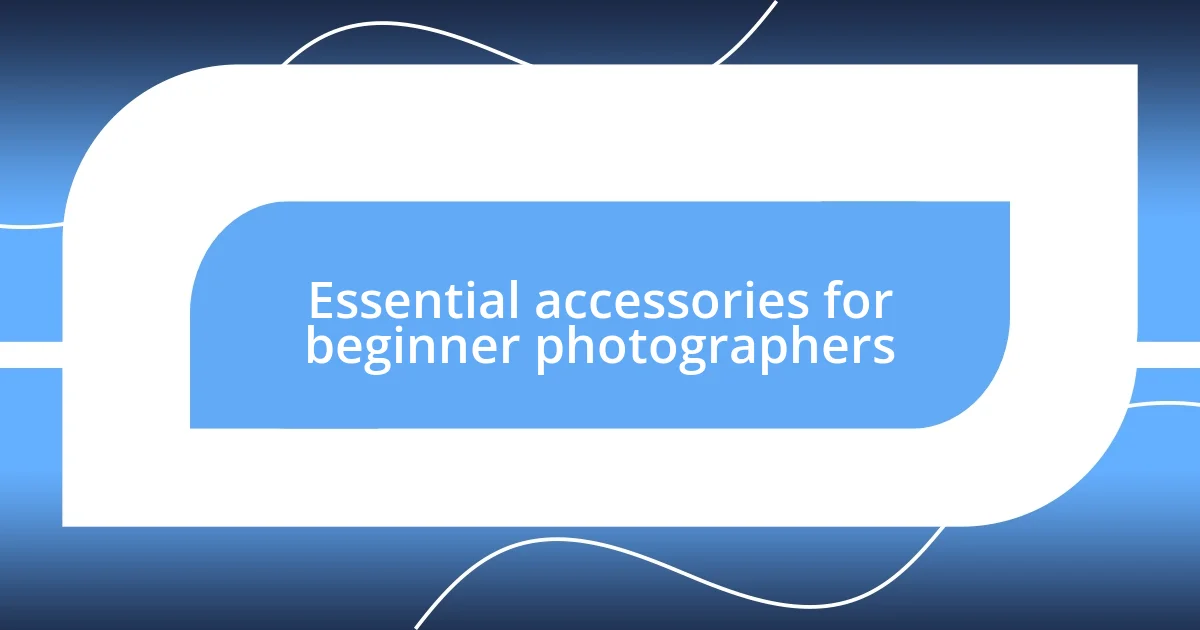
Essential accessories for beginner photographers
When diving into photography, having the right accessories can transform your experience. I remember my early days with just the camera and a kit lens, but once I added a sturdy tripod, everything changed. The stability it provided allowed me to explore long exposures, and capturing the silky flow of waterfalls became a newfound passion of mine. Have you ever tried shooting in low light without a tripod? It’s a game-changer.
Another essential accessory that I can’t recommend enough is a quality camera bag. Initially, I used a generic backpack, which was chaotic and left my gear unprotected. Investing in a camera-specific bag made all the difference; it not only organized my lenses and accessories but also gave me peace of mind while wandering through bustling markets or on rugged trails. What about you? Have you noticed the impact of a well-organized setup?
Finally, don’t underestimate the power of an extra battery and a memory card or two. There have been times when I’ve been deep into a photoshoot, completely losing track of time, only to find my battery on the verge of dying. I learned that having backups not only saved those moments but also let me fully immerse myself in the art without worrying about running out of power or space. It’s a small preparation that brings immense relief—have you thought about what could happen if you miss the perfect shot?
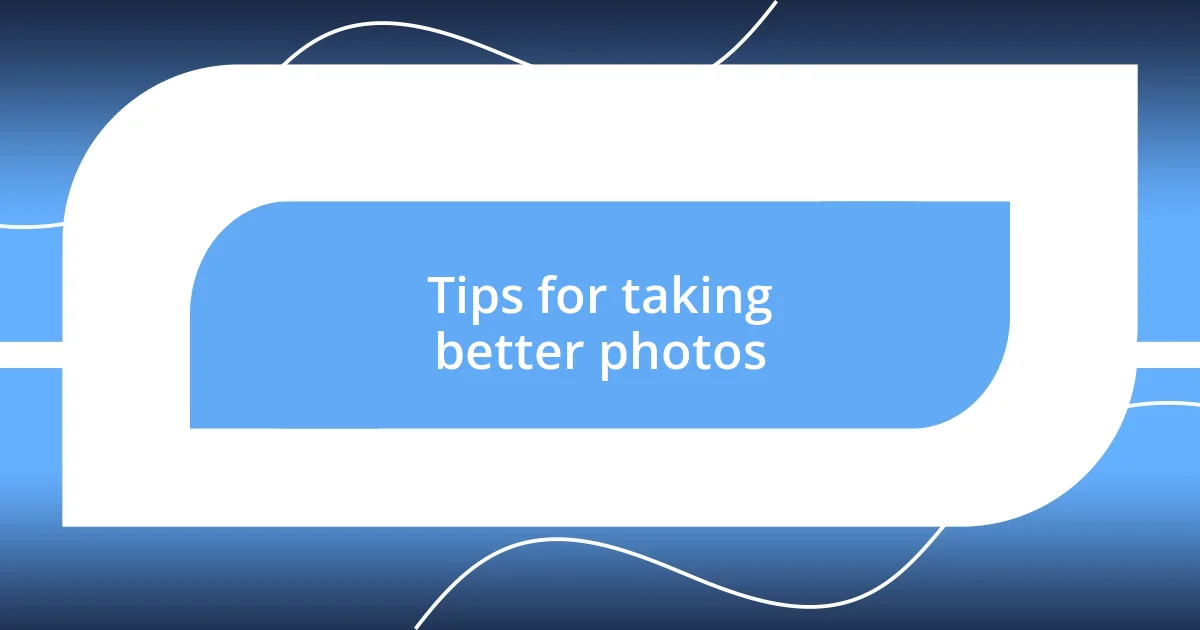
Tips for taking better photos
When it comes to taking better photos, mastering the basics of composition can make a significant difference. I recall experimenting with the rule of thirds in my early days—drawing imaginary lines on my viewfinder helped me frame my subjects more dynamically. It’s amazing how shifting your subject slightly can lead to more engaging photos. Have you ever tried this technique? You might find that it elevates your compositions in unexpected ways.
Using natural light effectively is another game changer. I remember a shoot at sunset when the soft, golden light transformed my pictures into something magical. If you can, try shooting during the golden hour—just after sunrise or before sunset. The way the light casts warm tones can add depth and emotion to your images. Have you noticed how different lighting conditions change the mood of your shots?
Finally, don’t hesitate to experiment with different angles and perspectives. I often find that changing my vantage point can reveal new details and stories within a scene. A low angle can make a flower appear majestic, while shooting from above can offer a fresh view of familiar subjects. Have you played around with your perspective? It’s a simple adjustment, but it can open up a world of creativity in your photography.
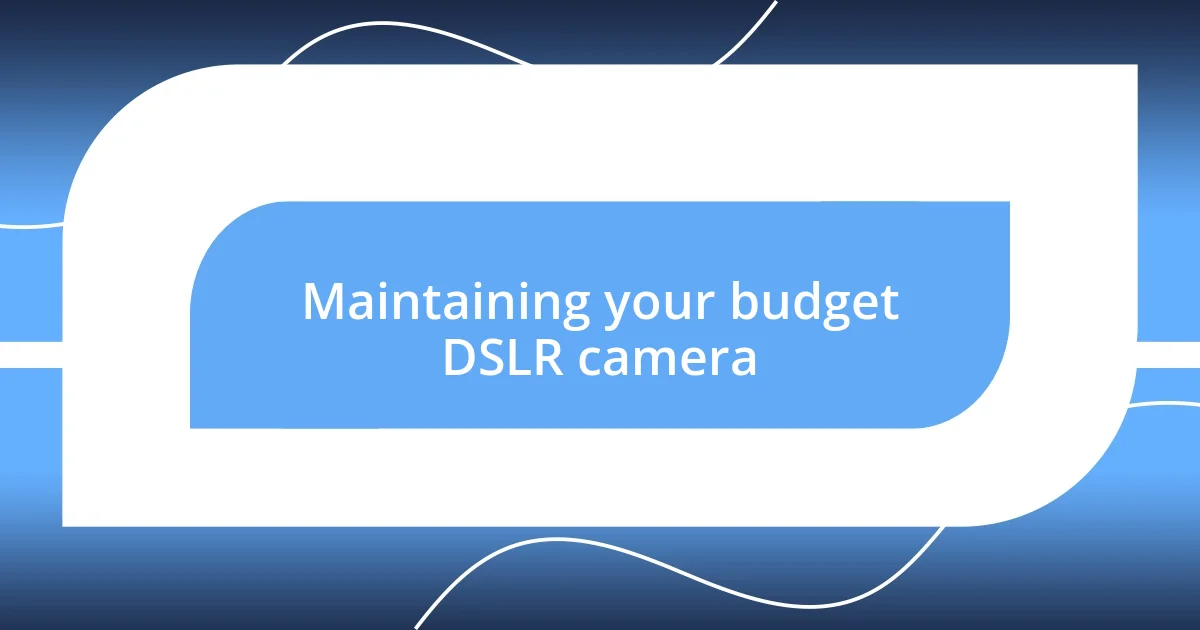
Maintaining your budget DSLR camera
Maintaining your budget DSLR camera is not just about keeping it clean; it’s about creating a connection with your gear. I remember the first time I noticed a smudge on my lens during an important shoot. I couldn’t believe the impact a simple speck could have on my photos. Now, I make it a point to regularly clean my lenses and body, using a gentle microfiber cloth and a blower. Have you ever taken a moment to wipe down your camera? It might just surprise you how much clearer your shots become.
Another key aspect is storing your camera properly. I learned the hard way when I left mine in a hot car for a few hours; the heat can wreak havoc on the internal components. Nowadays, I always ensure to keep my camera in a cool, dry place and invest in a padded case for extra protection. Have you thought about the environment where you store your gear? It’s a simple change that can significantly extend the life of your equipment.
Finally, staying up-to-date with software and firmware updates is crucial. I remember feeling frustrated when my camera was acting up during a shoot, only to find out later that a simple update would have fixed it. Regularly checking for updates not only enhances performance but can also introduce new features. Do you regularly check for updates? Embracing this practice can keep your budget DSLR running smoothly, allowing you to focus on capturing those beautiful moments.














